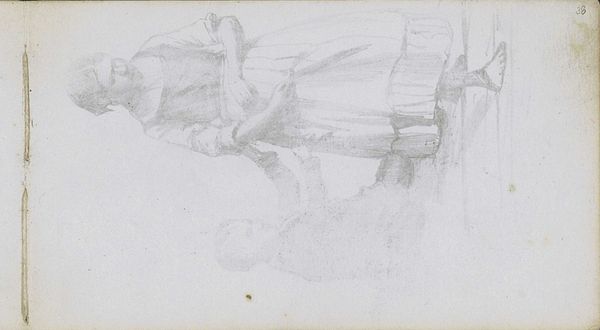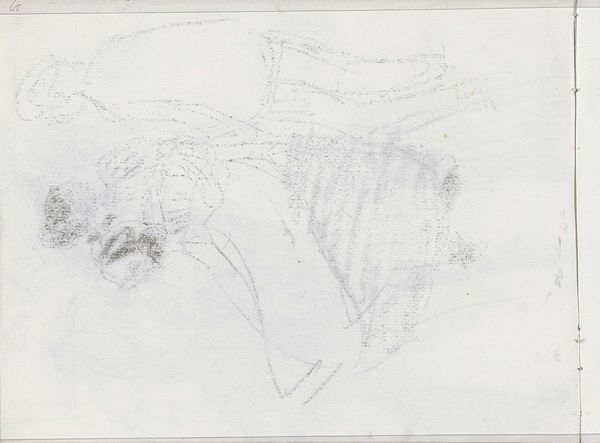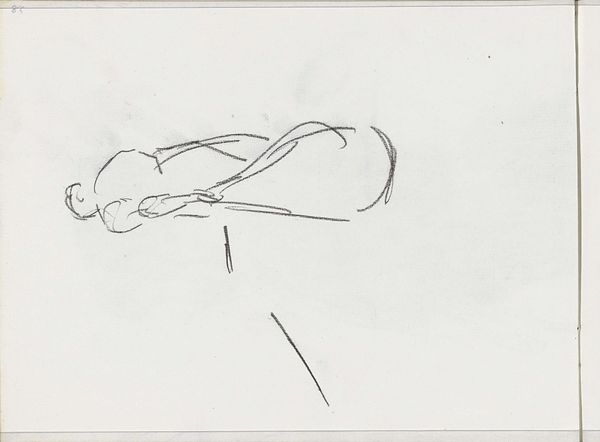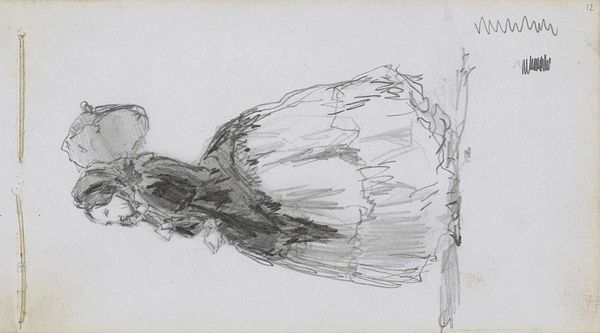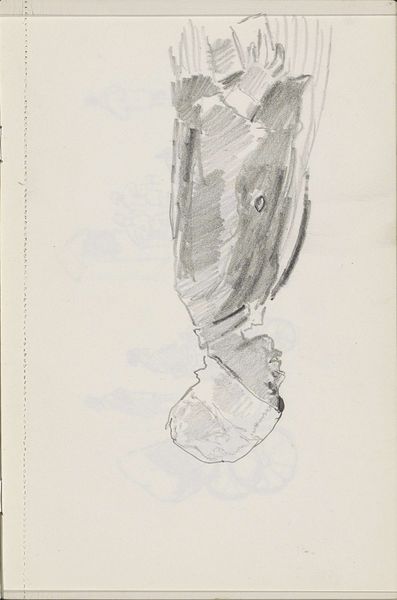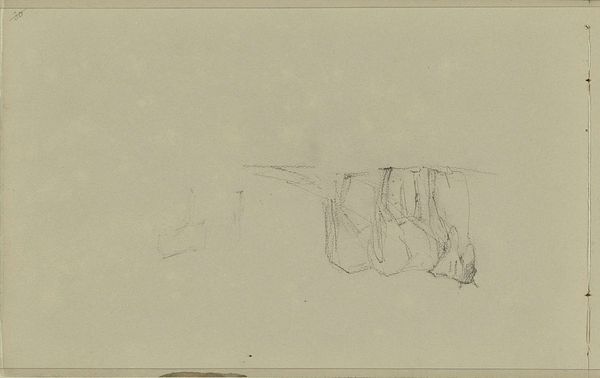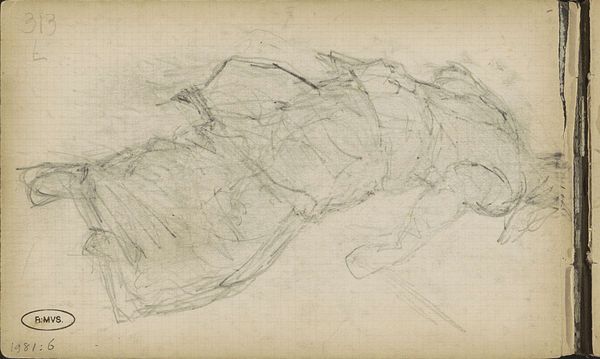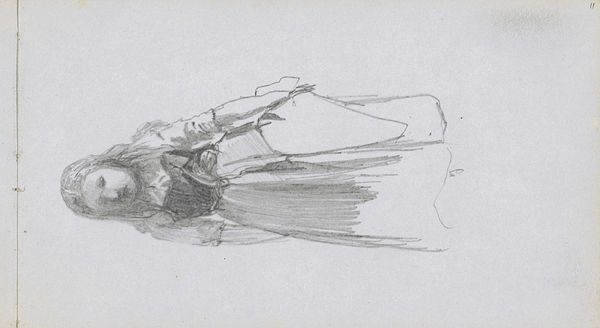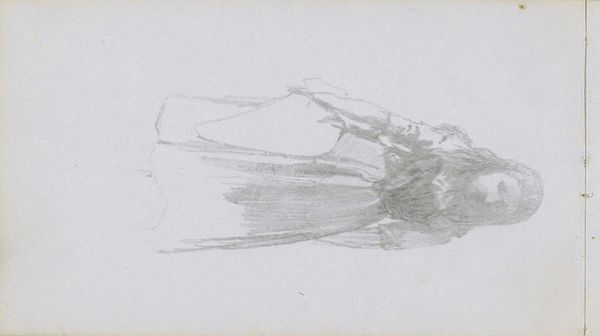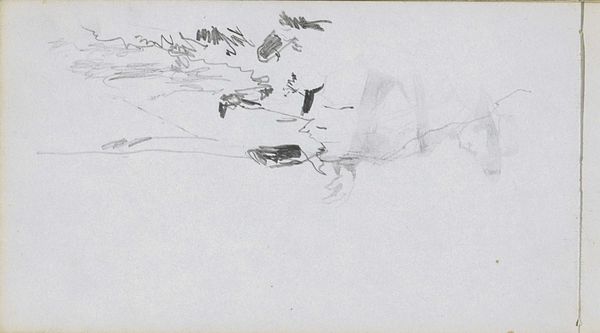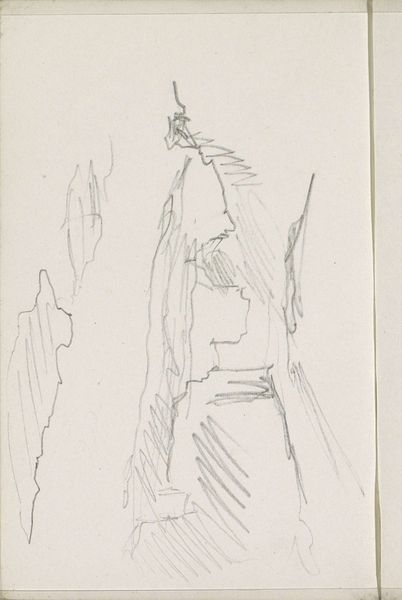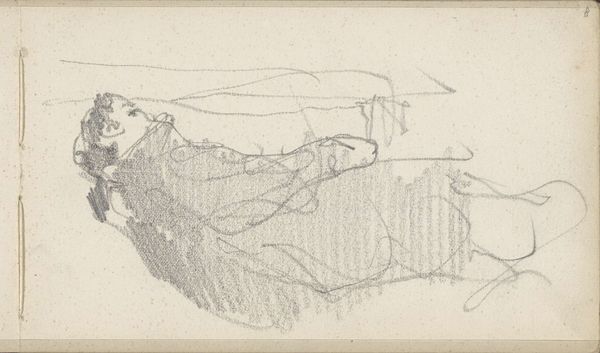
Copyright: Rijks Museum: Open Domain
Editor: Here we have Johan Hendrik Weissenbruch’s "Standing Woman with a Parasol," made sometime between 1834 and 1903. It’s a delicate pencil drawing, housed here at the Rijksmuseum. What strikes me most is its ephemeral quality. It feels like a fleeting impression, a ghost in pencil. What do you see in this piece? Curator: It reminds me of memory itself – fragmented, layered, and incomplete. Notice how the artist uses repetition. We see a figure repeated, almost like echoes. Consider the parasol: It's not just about protection from the sun; it's a symbol of status, of carefully constructed femininity. But here, it's rendered with such light strokes. Does that imply something about the transient nature of these symbols? Editor: That's interesting. I hadn't considered the parasol as a social symbol, more as a practical object. So, are you suggesting the artist is questioning these social constructs? Curator: Perhaps. Or perhaps he is commenting on how even the seemingly permanent markers of identity are subject to the erosion of time, much like a faint memory. It's also fascinating to consider this in the context of the burgeoning Impressionist movement. The sketch captures a sense of fleeting momentariness – a pre-cursor to impressionistic fleeting moment. What could be more meaningful than everyday, observed life? Editor: I see it now. The sketchiness reinforces that idea of capturing a transient moment. It almost feels unfinished, like the memory is still forming. Curator: Precisely! It's a beautiful illustration of how the simplest sketch can hold complex ideas about identity, time, and perception. It allows us to remember and see the impression within us. Editor: This has given me a new perspective, and makes the sketch feel very poignant and personal. Curator: And hopefully will resonate and inspire many others!
Comments
No comments
Be the first to comment and join the conversation on the ultimate creative platform.
